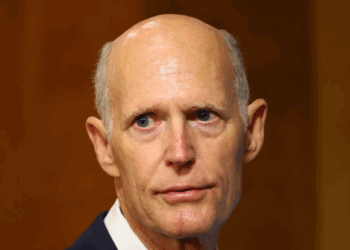Iran’s nuclear industry is well-established, with important centers spread over the country, and some buried deep underground, to protect from the kind of aerial attack Israel has just launched.
Here are the main centers of Iran’s nuclear program:
Natanz
Roughly 140 miles south of Tehran, Natanz is considered Iran’s main center for uranium enrichment, and it was a prime target of the Israeli strikes. The damage to it appeared to be severe. It is only partially underground and was recently reinforced.
It contains a range of sophisticated centrifuges, including the most advanced models, for enriching uranium to high levels. The International Atomic Energy Agency, the U.N. nuclear watchdog, says there are nearly 14,000 centrifuges at work there, with thousands more in place but inactive.
Uranium enriched at low levels can be used as fuel for civilian uses, such as producing energy. Highly enriched uranium can be used to make nuclear weapons.
Natanz has been targeted in the past, with a computer virus, Stuxnet, some 15 years ago, and with sabotage and explosions as recently as 2021. Iran has always in the past repaired the damage and increased the sophistication of its centrifuges.
Rafael Grossi, the head of the I.A.E.A., confirmed on Friday that Natanz had been hit but said that no radiation leak had been detected so far. He condemned attacks on nuclear facilities in general, as he has done in Ukraine, as very dangerous.
“Any military action that jeopardizes the safety and security of nuclear facilities risks grave consequences for the people of Iran, the region and beyond,” Mr. Grossi told the agency’s board of governors in Vienna.
Fordow
Iran’s best-protected nuclear site, Fordow, near the city of Qom, is deep inside a mountain, estimated to be about half a mile below ground to protect it from bombing. Israel did not appear to have attacked it.
To do so would require repeated use of huge “bunker buster” bombs, and most experts think that cannot be done by Israel alone, without American help.
Fordow was operated secretly by Iran until it was exposed in 2009. It contains Iran’s most advanced centrifuges and is considered crucial for Iran to enrich uranium to 60 percent, close to bomb grade. It is said to contain close to 3,000 sophisticated centrifuges, more than half of them the most modern type, with the capacity to install at least 1,000 more.
Parchin
Parchin is a military complex southeast of the capital, Tehran, where Iran has tested high explosives, which can be used as triggers for nuclear warheads. It is widely suspected that the site was used in the past by Iran in efforts to weaponize enriched uranium.
Iran has denied ever doing nuclear work there but has refused to allow the I.A.E.A. access it has demanded.
Bushehr
Bushehr is Iran’s only operating nuclear power plant. Located on the coast of the Persian Gulf, it uses Russian fuel that Russia then takes back when it is spent.
Steven Erlanger is the chief diplomatic correspondent in Europe and is based in Berlin. He has reported from over 120 countries, including Thailand, France, Israel, Germany and the former Soviet Union.
The post Israeli Strikes Targeted Some of Iran’s Most Important Nuclear Facilities appeared first on New York Times.




